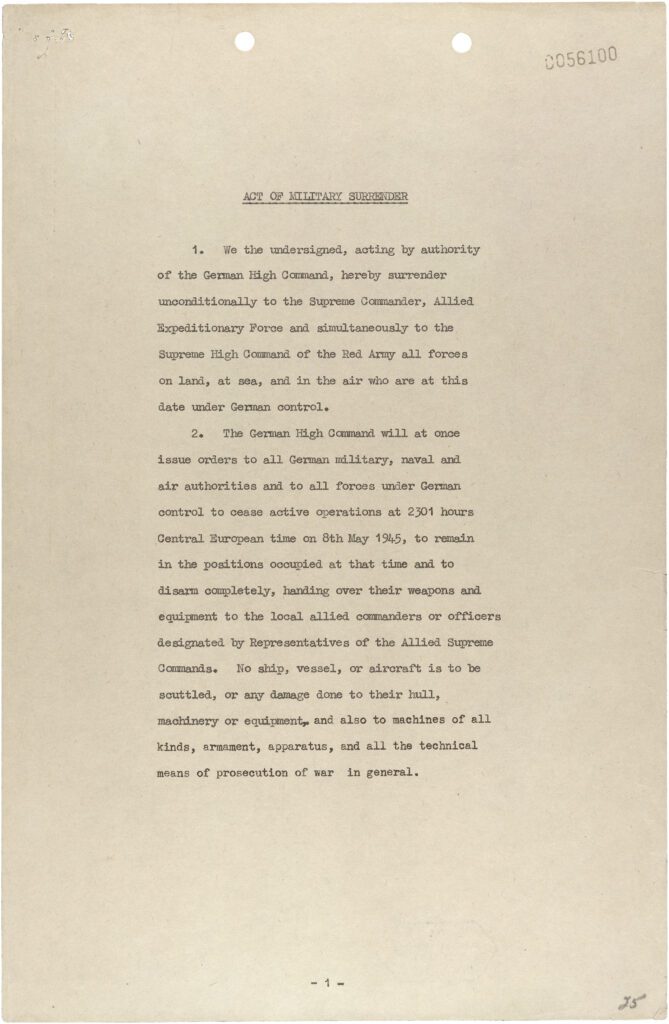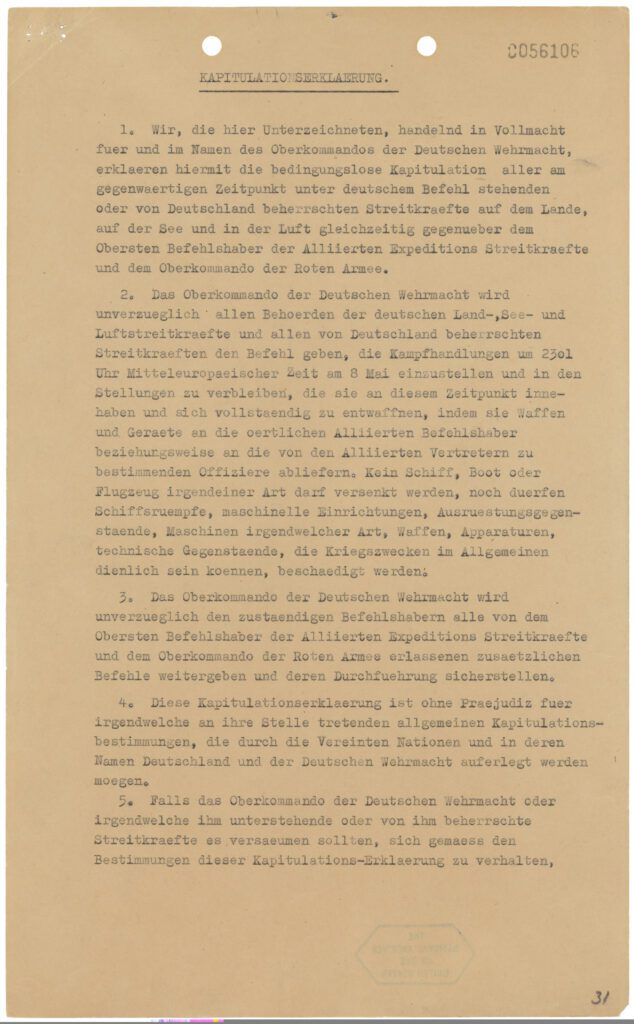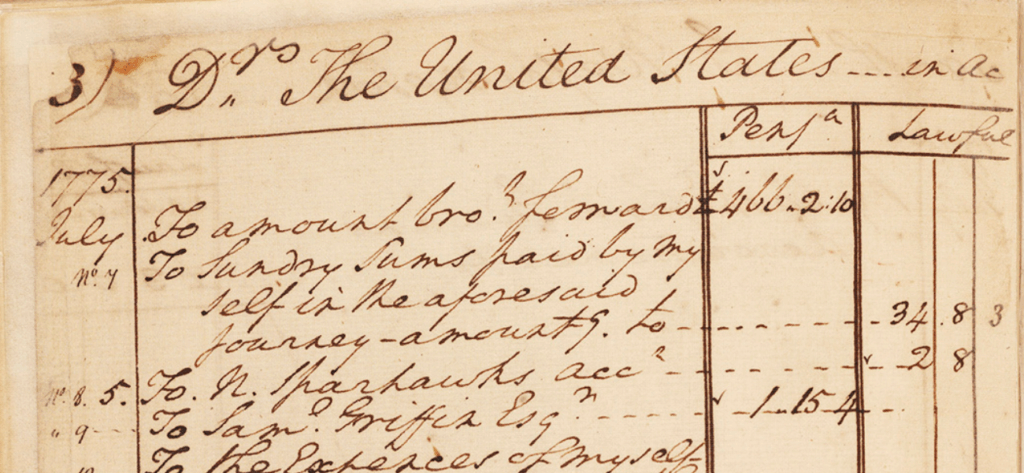On Display 5/8/2025 – Present
Victory in Europe
World War II, the deadliest military conflict in history, erupted in Europe on September 1, 1939, when Germany invaded Poland. For nearly six years it raged in the European Theater resulting in millions of military and civilian deaths and destroying cities, homes, and families. Finally, in the spring of 1945, Allied forces exhausted the will and fighting capacity of the German war machine. Slowly, but completely, the Nazi-led Third Reich collapsed in a series of piecemeal surrenders culminating in VE (Victory in Europe) Day on May 8, 1945.
Celebrations of Nazi Germany’s defeat in Europe were tempered, however, by the ongoing war with Japan in the Pacific. Allied victory over Japan followed just four months after VE Day, bringing World War II to an end.
Germany surrenders and is disarmed
Following a series of military capitulations, Germany signed an unconditional surrender of its forces on May 7, 1945 at Reims, France. At the insistence of the Soviet Union, a second formal instrument of surrender was signed the following day at Berlin to ensure that the war in Europe ended on all fronts. The formal surrender documents signed on May 8, or VE Day, were written in English, Russian and German. Besides the addition that Germany “disarm completely,” the formal surrender documents differ little from those signed at Reims.


Related Online Resources:
Find more resources related to World War II records at Archives.gov.
Read about “Celebrating Victory in Europe (V-E) Day, 1945” in The Text Message blog.
See “VE Day in Color” in the Unwritten Record blog.





